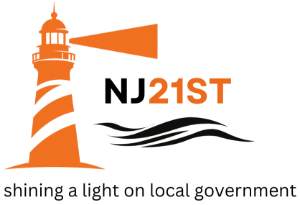Laura’s Notes on the BHPSNJ BOE Meeting – Part II
Following the town-hall-style Referendum session, the regular Board meeting continued.
My final thought on the Referendum, after watching and re-watching portions of the meeting, is the clear perception of bias from the Mountainside Representative. To be fair, he is a strong and outspoken advocate for Mountainside students and families (and they are fortunate to have that representation). But if his primary lens is exclusively the Mountainside students at GL, while the Referendum is designed to affect all students in BHPS and the tax impact falls entirely on Berkeley Heights residents, his inability to take a step back and consider the district-wide implications became a disadvantage in the broader Referendum conversation.
Kevin Morra, Director of Special Education, and Alyssa Rush, Supervisor of Special Education, presented an overview of practices and programs in the special education department. Their central goal is providing inclusive education in the least restrictive environment. The district uses two main instructional models: In-Class Resource and the Collaborative Consultative Model, which was introduced approximately four years ago at CMS and GLHS.
The traditional, most widely used approach is In-Class Resource, implemented at the elementary schools and early childhood centers. This model places a full-time special education teacher in the classroom who can provide one-on-one support as needed. Depending on the individualized education plan or 504 accommodations, the level and type of support can vary for each student.
The newer method, designed to support growing independence and student advocacy, is the Collaborative Consultative Model. In this system, students do not receive full-time one-on-one support unless their education plan specifically calls for it. Instead, a single special education teacher rotates between two classrooms during a block. Their direct support is driven by student need, lesson content and design. Paraprofessionals, who are not certified special education teachers, may also assist students when needed. Students are encouraged, though not required, to visit the “All Room” when struggling in any academic area.
Notably absent from the presentation and subsequent comments involved increasing issues connected to classroom management. NJ21st has received multiple accounts of students being moved to different locations for safety reasons along with reports of multiple interruptions to instruction. Parents who have reached out share a common concern – that classroom management is being taxed and whether the issue connects to the model, its implementation or training is not clear. With the increasing need for support in confined elementary-level classrooms, combined with rapid housing development in Berkeley Heights, it is fair to ask whether the district is directing resources and support to critical areas; whether the continued shift away from explicit learning is increasing frustration and/or whether the model implemented under the prior administration and maintained by the current is just not working.
Akiri did raise concern with the Districts “misrepresentation” that both special models provide the same support when, in fact, most students in the consultative collaborative are not supported with a full-time special education teacher, as they did in the in-class resource model.
The Technology and Communication Committee discussed student fees and recommended adding a disclaimer to the CMS student handbook stating that students with outstanding fees will not receive diplomas until the balance is paid.
Terrero expressed concerns the Jump Start program and that not everyone was able to join – noting that its current limits restrict how many students benefit.
The Curriculum Committee reported on follow-up discussions stemming from the GLPTO survey on grading and GPA. Members expressed frustration that the administration does not plan substantive changes until the 2026–27 school year. However, Dr. Feltre and the administrative team agreed to monitor grading practices to ensure scores are reported in a timely manner. The committee also suggested enabling projected GPA in PowerSchool for GLHS students.
During committee reports, Bradford, visibly fatigued and frustrated, criticized Dr. Foregger, chair of the Finance and Facilities Committee, for his absence. She labeled it a “dereliction of duty” that he did not appoint another committee or Board member to read the minutes, and she refused to allow anyone else to deliver the report. Akiri questioned the Board attorney about whether this refusal was permissible.
As the Board prepared to vote on the bill list, Joly asked the attorney whether Stanley was ethically permitted to vote on legal bills that included her publicly funded defense in an ongoing ethics matter. The attorney declined to offer direct legal advice but reminded Board members that they each have the authority to make those determinations themselves. Stanley voted to approve the bills connected to her tax funded defense, which stood in contrast to her abstention a few meetings ago in connection to a substitute teaching position.
The meeting finally adjourned at approximately 1:30 a.m.
Also Read: Laura’s Notes on the Referendum Portion of the BOE Meeting: What the Board’s Decision Means for March 10
Support & Stay Informed
NJ21st is powered by facts, not special interests. If our reporting helped you stay informed, consider making a contribution and subscribing to get new coverage delivered directly to your inbox.
Contribute Today



